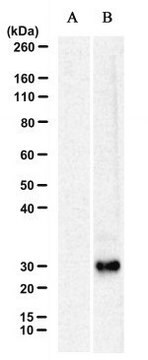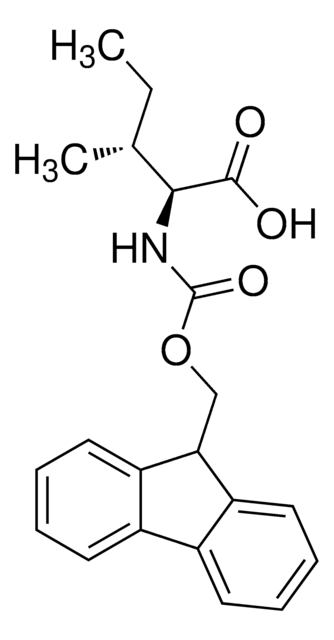MABN2438
Anti-RPE65 Antibody, clone KPSA1
Synonym(s):
All-trans-retinyl-palmitate hydrolase, EC:3.1.1.64, Lutein isomerase, Meso-zeaxanthin isomerase, Retinal pigment epithelium-specific 65 kDa protein, Retinoid isomerohydrolase, Retinol isomerase
About This Item
Recommended Products
biological source
mouse
Quality Level
antibody form
purified antibody
antibody product type
primary antibodies
clone
KPSA1, monoclonal
species reactivity
bovine, human, mouse
packaging
antibody small pack of 100
technique(s)
direct ELISA: suitable
immunohistochemistry (formalin-fixed, paraffin-embedded sections): suitable
western blot: suitable
isotype
IgG1κ
epitope sequence
C-terminal
Protein ID accession no.
UniProt accession no.
Gene Information
human ... RPE65(6121)
Specificity
Immunogen
Application
Evaluated by Western Blotting in Bovine retina microsomal preparation.
Western Blotting Analysis: A 1:10,000 dilution of this antibody detected RPE65 in Bovine retina microsomal preparation.
Tested Applications
Western Blotting Analysis: A representative lot detected RPE65 in Western Blotting applications (Golczak, M., et al. (2010). J Biol Chem. 285(13):9667-9682; Banskota, S., et al. (2022). Cell. 185(2):250-265.e16).
Immunoaffinity Purification: A representative lot was used for purification of crossed-linked RPE65.(Golczak, M., et al. (2010). J Biol Chem. 285(13):9667-9682).
Immunohistochemistry Applications: A representative lot detected RPE65 in Immunohistochemistry applications (Amengual, J., et al. (2014). Hum Mol Genet. 23(20):5402-17).
ELISA Analysis: A representative lot detected RPE65 in ELISA applications (Golczak, M., et al. (2010). J Biol Chem. 285(13):9667-9682).
Note: Actual optimal working dilutions must be determined by end user as specimens, and experimental conditions may vary with the end user.
Target description
Physical form
Reconstitution
Storage and Stability
Other Notes
Disclaimer
Not finding the right product?
Try our Product Selector Tool.
Storage Class
12 - Non Combustible Liquids
wgk_germany
WGK 1
flash_point_f
Not applicable
flash_point_c
Not applicable
Certificates of Analysis (COA)
Search for Certificates of Analysis (COA) by entering the products Lot/Batch Number. Lot and Batch Numbers can be found on a product’s label following the words ‘Lot’ or ‘Batch’.
Already Own This Product?
Find documentation for the products that you have recently purchased in the Document Library.
Our team of scientists has experience in all areas of research including Life Science, Material Science, Chemical Synthesis, Chromatography, Analytical and many others.
Contact Technical Service






